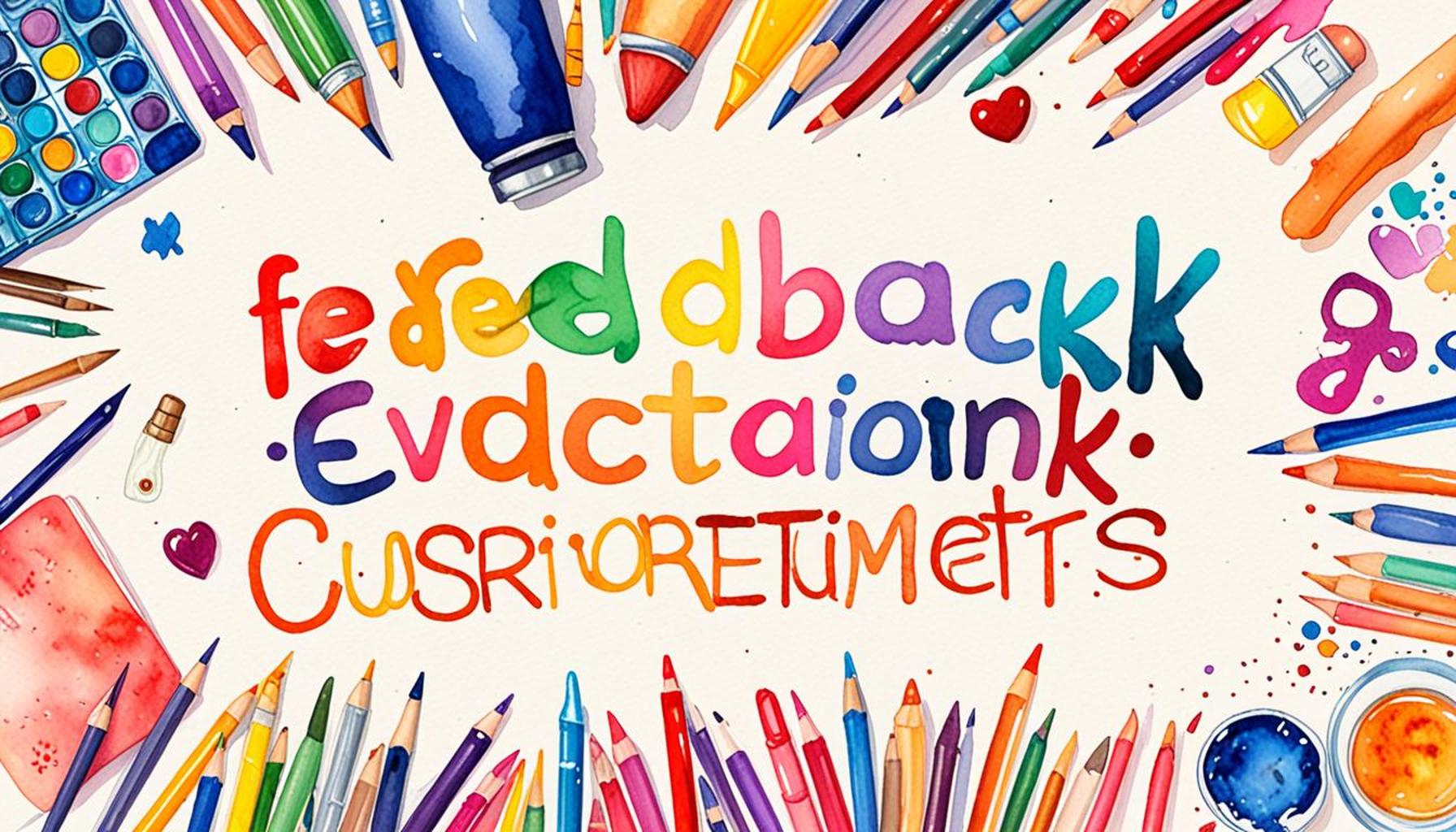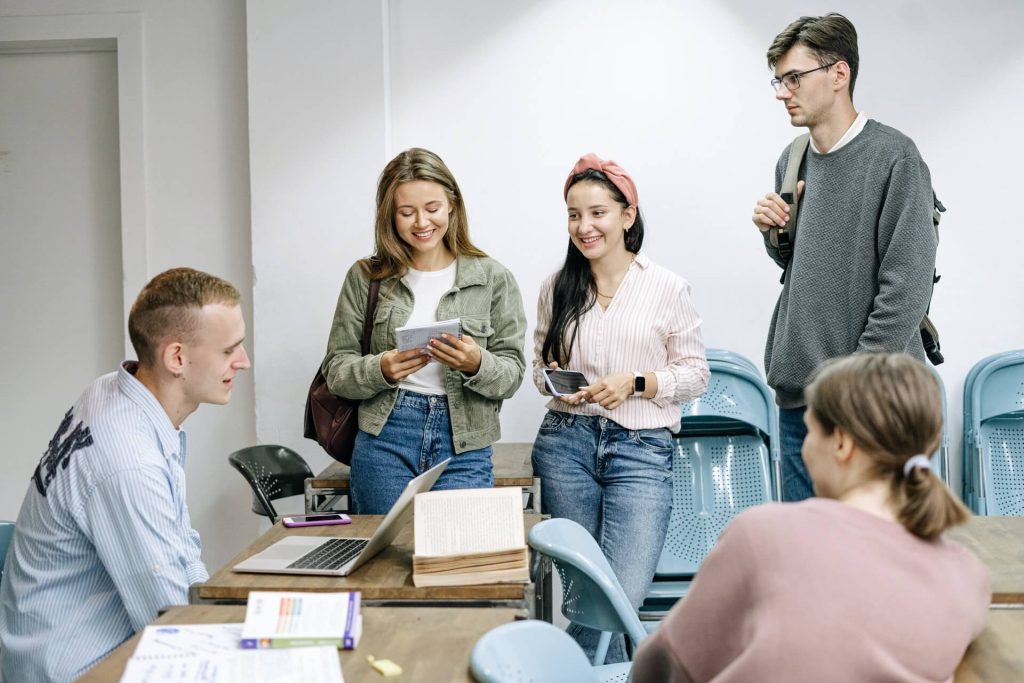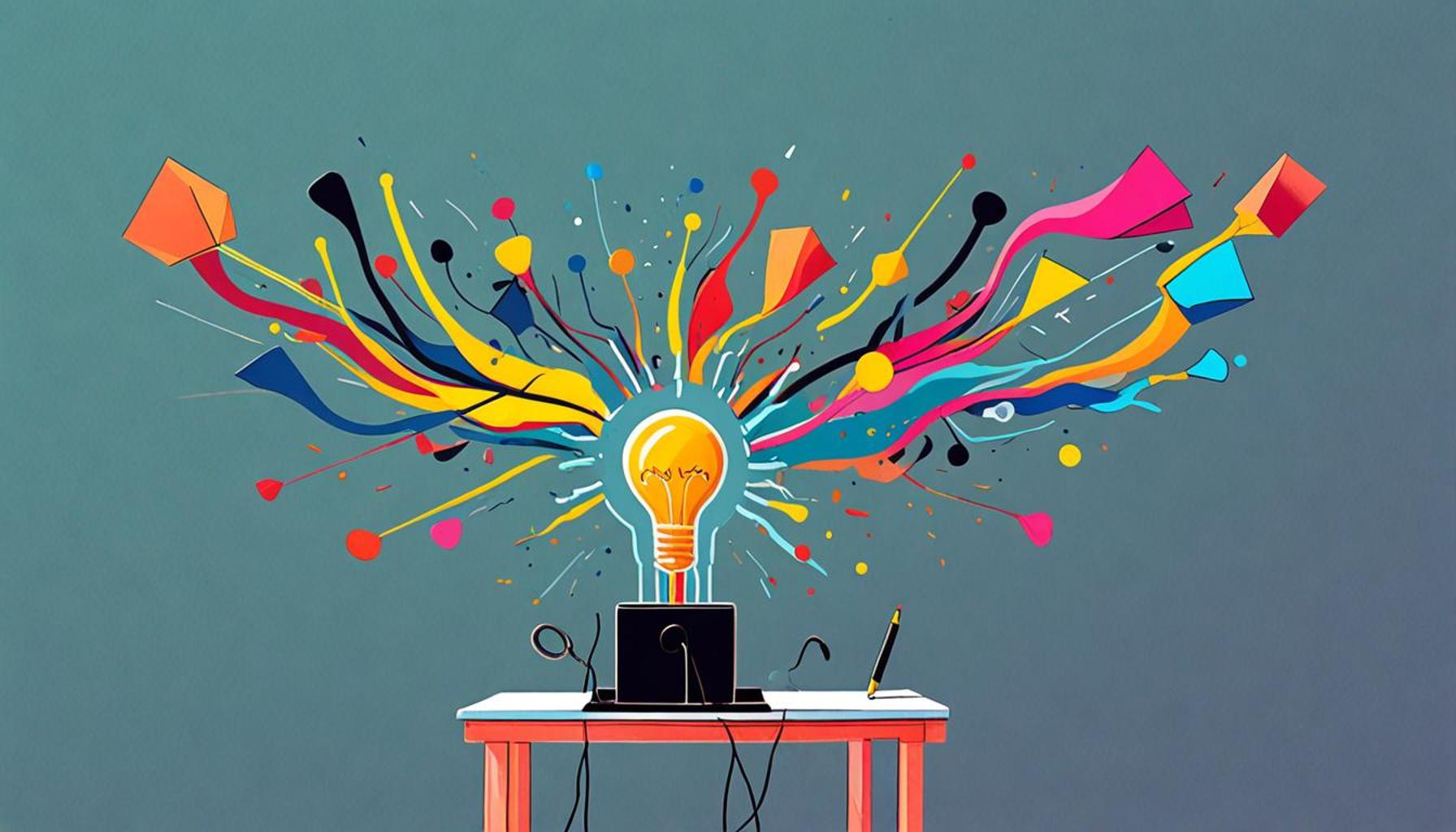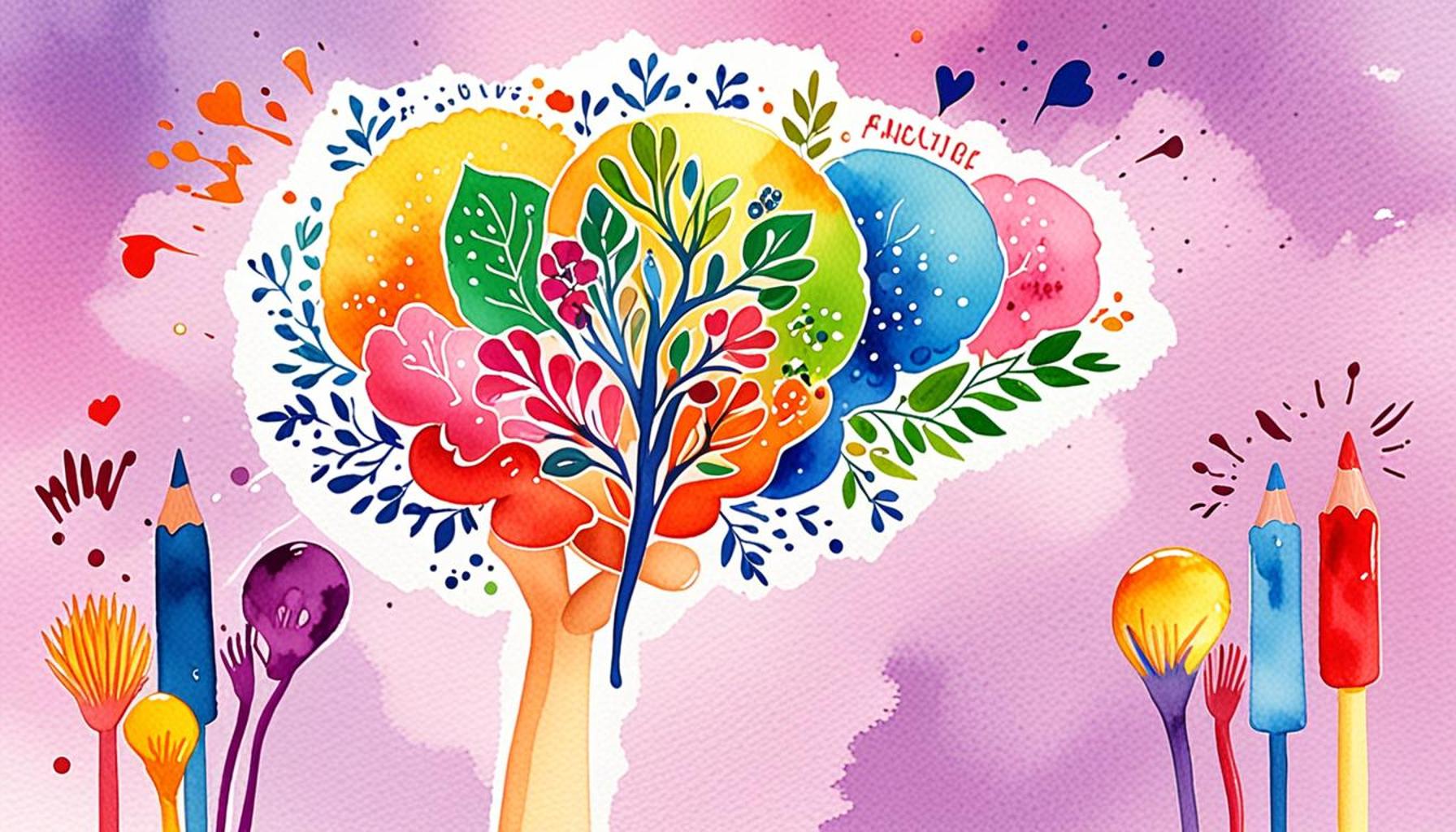Feedback in Educational Environments: Fostering Students’ Curiosity and Initiative

Understanding the Impact of Effective Feedback
In today’s rapidly evolving educational landscape, feedback plays a pivotal role in shaping students’ learning experiences. It serves not only as a measure of progress but also as a catalyst for fostering curiosity and initiative among learners. When delivered effectively, feedback can ignite a quest for knowledge that transcends traditional boundaries, enabling students to explore and engage with their curriculum in innovative ways.
Consider the transformative effects of feedback in educational settings. First, it encourages self-reflection, prompting students to analyze their strengths and weaknesses critically. This reflection is essential because it helps learners identify areas needing improvement while also recognizing what they excel at. For instance, a student in a mathematics class may receive feedback that highlights both their adeptness in solving equations and their need to work on word problems. This insight can steer focused practice and targeted study.
Second, feedback can promote engagement. Interactive feedback mechanisms, such as live polls or quizzes after lessons, can spark interest and participation. In Nigeria, teachers are beginning to incorporate digital tools like Google Forms to gather real-time feedback, creating an interactive classroom environment. Students who feel their voices are heard are more likely to invest effort into their learning experiences.
Third, feedback builds confidence. Constructive insights empower students to take risks in their learning. For example, when educators provide positive reinforcement alongside areas for improvement, learners are encouraged to step outside of their comfort zones. An art student in a Lagos school who receives uplifting feedback on a project might feel inspired to experiment with new techniques, thus enhancing their creative skills.
Nigeria’s diverse educational ecosystem offers unique opportunities to explore these concepts further. Peer feedback sessions can significantly enhance collaboration and communication skills among students. When students critique each other’s work, they learn to articulate their thoughts and consider different perspectives, fostering a supportive learning community.

Furthermore, integrating technology in providing feedback, such as mobile applications, can invigorate the learning process. Apps that allow instant feedback on assignments not only keeps students engaged but also helps them track their progress in real-time. This immediacy can make learning feel more dynamic and responsive.
As we delve deeper into the nuances of feedback within educational environments, it becomes clear that fostering curiosity and initiative does not merely support academic achievement. It cultivates lifelong learners who are equipped to navigate the complexities of the modern world. As educators in Nigeria harness these feedback strategies, they are not only enhancing student outcomes but also preparing students to become proactive, adaptable individuals in an ever-changing global landscape.
RECOMMENDED: Check out this similar article
The Mechanisms of Feedback: Strategies that Spark Curiosity
Effective feedback is more than just a tool for assessment; it is a fundamental mechanism that can inspire curiosity and a sense of initiative among students. The journey of learning is inherently tied to the ways in which feedback is presented and perceived. In Nigerian educational contexts, where the diversity of student backgrounds and learning styles is vast, it becomes increasingly important to tailor feedback approaches that resonate well with learners. By implementing various strategies, educators can create a feedback-rich environment that cultivates students’ innate desire to explore and discover.
One effective feedback strategy is the use of formative assessments. Unlike traditional summative assessments, which evaluate learning at the end of an instructional period, formative assessments provide real-time insights into student understanding. This engages students actively in the learning process. For instance, teachers can use short quizzes or interactive classroom discussions to gauge student comprehension. By allowing students to see their performance instantly, they become motivated to inquire deeper into the topics at hand, often leading to a more thorough exploration of subjects that pique their interest.
Another powerful method is goal-setting feedback, where educators assist students in establishing achievable objectives. When students receive feedback focused on personalized goals, their sense of ownership over their learning increases. They become more invested in reaching these specific targets, which encourages them to take the initiative in their studies. Educators can help students set both short-term and long-term goals, creating a roadmap that not only addresses areas for improvement but also encourages them to pursue interests beyond the standard curriculum.
Types of Feedback that Drive Engagement
To maximize the impact of feedback on student curiosity and initiative, educators can adopt several types of feedback strategies, such as:
- Descriptive Feedback: This involves providing specific comments on student work, highlighting what was done well and offering clear guidance for improvement. By detailing strengths and weaknesses, students can better understand their learning journey.
- Peer Feedback: Facilitating peer assessments allows students to learn collaboratively. When students evaluate each other’s work, they gain diverse perspectives and learn to articulate constructive criticism, which is a vital skill in both academic and real-world contexts.
- Feedforward Feedback: Instead of solely reflecting on past performance, feedforward feedback focuses on providing insights that help students navigate future tasks. This proactive approach encourages students to look ahead and take calculated risks in their learning processes.
By integrating these diverse feedback practices, educators in Nigeria can nurture an environment where students feel empowered to ask questions, engage critically, and venture beyond their comfort zones. In a landscape where many learners face challenges in expressing their curiosity, feedback serves as a bridge that connects knowledge with exploration.
As we explore further, it will become increasingly clear how strategically applied feedback tactics can not only directly enhance academic performance but also cultivate the essential qualities of lifelong learners who are eager to adapt and grow in today’s fast-paced world.
| Category | Benefits |
|---|---|
| Engagement | Transparency in feedback encourages students to actively participate in learning activities, enhancing their investment in educational outcomes. |
| Personalized Learning | Tailored feedback recognizes individual strengths and weaknesses, nurturing curiosity and promoting independent inquiry into subjects of interest. |
| Motivation | Constructive criticism boosts students’ confidence and inspires further exploration, fostering a culture of initiative and resilience. |
| Collaboration | Feedback-rich environments promote teamwork, where students share insights and learn from peers, strengthening community learning bonds. |
Incorporating these elements into educational environments transforms them into dynamic spaces of learning. Feedback serves not only as an assessment tool but also as a catalyst for personal growth, pushing students to broaden their understanding and tackle challenges head-on. This ongoing conversation between students and educators enhances educational experiences, ensuring that curiosity is not just sparked but actively nurtured. By continually refining the feedback process, educators can create an atmosphere where students feel empowered to take initiative and engage deeply with the material, ultimately fostering a lifelong love for learning.
YOU MAY ALSO LIKE: Read read another article
The Role of Technology in Feedback Delivery
As the educational landscape in Nigeria evolves, technology plays an increasingly pivotal role in the feedback mechanism. Digital tools not only streamline the feedback process but also create interactive opportunities for students to engage with their learning material. Incorporating technology into feedback delivery can significantly enhance students’ curiosity and initiative, making learning a more dynamic experience.
One prominent example is the utilization of learning management systems (LMS), which allow educators to provide real-time feedback through online assignments and quizzes. Platforms like Google Classroom and Moodle, which are gaining traction in Nigerian schools, enable teachers to give immediate, personalized feedback. This immediacy helps students understand their mistakes right away, prompting them to dig deeper into the subject matter and prompting questions that evoke their natural inquisitiveness.
Furthermore, multimedia feedback is emerging as a transformative technique. In this approach, educators can record audio or video comments on student assignments, which makes feedback more engaging and humanizes the learning experience. With such formats, students often find it easier to connect with the feedback, creating a dialogue that encourages further inquiry. For instance, a teacher in Lagos may use a short video response to explain complex concepts in student papers, thereby inviting a second look and encouraging students to respond with their findings or questions.
Feedback Cultivating a Growth Mindset
Feedback is not only about academic performance; it also plays a vital role in shaping a student’s mindset. By framing feedback in a way that emphasizes growth and learning, educators can cultivate a culture where students view challenges as opportunities rather than setbacks. This growth mindset is essential for fostering curiosity and initiative.
One way to promote this mindset is through celebratory feedback, where accomplishments, no matter how small, are recognized and acknowledged. Celebrating progress builds a sense of competence and confidence among learners. For example, a teacher might commend a student who has made improvements in their understanding of mathematical concepts, encouraging them to tackle even more complex problems. This approach can spur students to take further initiative, as they become excited about their achievements and eager to replicate them in new contexts.
Incorporating reflective feedback techniques also adds value to the feedback process. Through reflection, students evaluate their learning strategies and outcomes. Prompting students to ask themselves what worked well and what could be improved encourages them to take ownership of their educational journeys. Questions like “What new strategies will you try next time?” or “How can you apply what you’ve learned to a real-world situation?” can stimulate deeper thinking and foster a continuous loop of curiosity and motivation.
Moreover, the importance of cultural relevance in feedback cannot be understated. In a diverse nation like Nigeria, feedback must resonate with students’ cultural backgrounds to be effective. When educators incorporate local contexts and examples in their feedback, students feel more connected and engaged, paving the way for a more inquisitive mindset. For instance, a history teacher referencing local historical figures while providing feedback can evoke a sense of pride and curiosity about their heritage, driving students to explore further.
In summary, the integration of technology and the adoption of growth-oriented feedback strategies present unprecedented opportunities to enhance students’ curiosity and initiative in Nigerian classrooms. As educators embrace these modern methodologies, students are set on a path toward exploration, critical thinking, and lifelong learning.
CHECK OUT: Click here to explore more
Conclusion: Unlocking Potential Through Effective Feedback
The significance of feedback in educational environments cannot be overstated; it is a fundamental pillar that supports the development of a student’s curiosity and initiative. As Nigerian educators increasingly adopt innovative techniques, the traditional view of feedback as a mere evaluative tool is transforming into a dynamic catalyst for learning. By leveraging technology and embracing growth-oriented feedback strategies, teachers can empower students to take ownership of their education.
Implementing real-time feedback mechanisms through learning management systems or utilizing multimedia formats enrich the student experience and foster a profound engagement with learning materials. Celebratory and reflective feedback further encourage students to acknowledge their progress and provoke thoughtful analysis of their learning methods. By instilling a culture that views feedback as a pathway to growth rather than a mere critique, educators inspire students to embrace challenges and pursue knowledge beyond the classroom.
Moreover, the incorporation of culturally relevant feedback enhances its effectiveness, ensuring that students not only relate to the content but also feel a sense of pride in their heritage. This cultural connection can ignite a spark of curiosity that drives further exploration and inquisitiveness.
In conclusion, educators are tasked with the vital role of crafting feedback that resonates on multiple levels. By exploring and expanding their feedback methodologies, they open doors to a world of inquiry and initiative for students, equipping them with the skills necessary to navigate an ever-changing landscape. In this pursuit, the educational environments in Nigeria can become vibrant ecosystems where curiosity flourishes and initiative thrives, laying the foundation for a brighter future.


